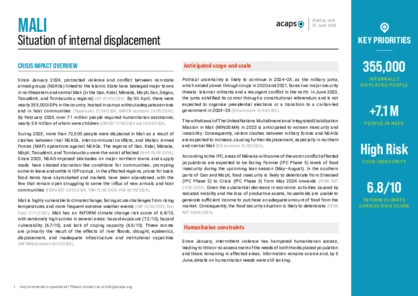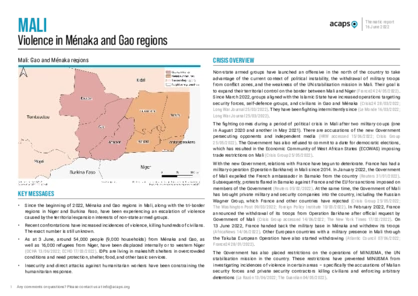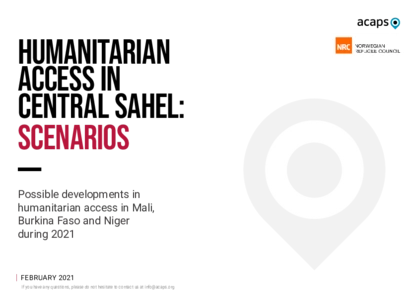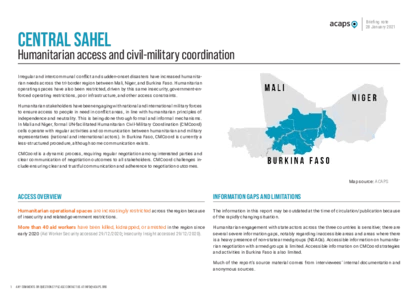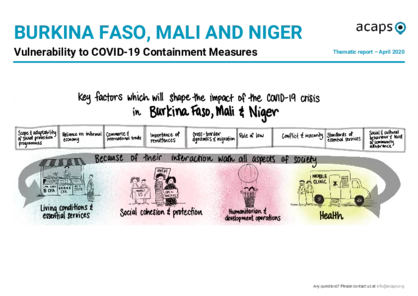Latest updates on country situation
28 October 2025
On 26 October 2025, Malian authorities suspended all school and university classes until 9 November due to acute fuel shortages resulting from a blockade imposed by Jama’at Nusrat al-Islam wal-Muslimin (JNIM) in September. The blockade has severely disrupted fuel convoys, preventing students and teachers from accessing educational facilities across central and northern regions. Before this suspension, insecurity had already rendered over 2,000 schools nonfunctional, affecting more than 600,000 children and 12,000 teachers by June and compounding existing barriers to education. The disruption increases risks of dropout and exposure to early marriage, child labour, and armed group recruitment – especially for children in conflict-affected areas who rely on schools for safety, meals, and psychosocial support. The closures come as part of broader pressure by JNIM to isolate urban centres, aggravating insecurity and access constraints across the country.
(TV5 Monde 27/10/2025, RFI 27/10/2025, UNICEF 01/10/2025)
30 September 2025
Violence and insecurity in Burkina Faso continue to force thousands of people to seek refuge in neighbouring Mali. Between April–September 2025, nearly 51,000 Burkinabè refugees arrived in Koro cercle (Bandiagara), with 613 people arriving per day to flee escalating violence across the border. This has doubled the refugee population, straining limited services. Families are sheltering in overcrowded schools, potentially disrupting children’s education as the academic year begins in October. Health facilities lack the capacity to meet growing maternal and reproductive health needs, with the main hospital operating without reliable electricity for surgeries. Protection risks are intensifying for women and children in makeshift shelters, while WASH infrastructure remains severely inadequate. With insecurity continuing to drive displacement, Koro could be hosting up to 110,000 refugees by the end of September, outnumbering the host population. Refugees and host communities urgently need assistance with shelter, WASH services, healthcare, and protection mechanisms. (UNHCR 25/09/2025, UNHCR 22/09/2025, UNHCR 19/09/2025)
08 September 2025
The Jama'a Nasr Al Islam wal Muslimin, affiliated with Al Qaeda, has imposed a blockade on Kayes and Nioro du Sahel cities, key trade hubs in southwestern Mali, disrupting fuel and food imports from Senegal and Mauritania. Several transport companies have suspended operations. The blockade raises fears of food shortages and increased movement restrictions for civilians and humanitarian workers. (RFI 05/09/2025, Jeune Afrique 06/09/2025, RFI 07/09/2025)
07 July 2025
Mali experienced a sharp deterioration in security in June, the country's deadliest month so far in 2025. Violence surged amid intensified operations by the Malian army and the paramilitary group Africa Corps, as well as continued attacks and blockades by the Jama'at Nusrat al-Islam wal-Muslimin armed group. Dozens of towns in the centre and north remain under blockades imposed by non-state armed groups, with Kayes and Nioro in the west recently added to the list. Humanitarian access is severely restricted. (ACLED 04/07/2025, RFI 03/07/2025, IOM 07/07/2025)
20 January 2025
Gao region in northern Mali continues to face severe flooding caused by the rising waters of the Niger River. Thousands have been displaced and their homes damaged or destroyed. By 17 January, some areas remained isolated, disrupting markets and vital infrastructure. Many residents lack shelter and rely on relatives for refuge. Urgent needs include food, shelter, and healthcare services.
(DW 17/01/2025, Studio Tamani 13/01/2025, Mali Actu 15/01/2025)
15 October 2024
Since April 2024, Mali has been experiencing exceptional rainfall, the heaviest since 1967. The impact has killed at least 76 people, injured 148, and affected around 257,000. Flooding across the country has also postponed the start of the academic year, originally scheduled for 1 October, to 4 November, delaying school for around 3.8 million students. The floods have damaged or destroyed nearly 400 schools, while others serve as shelter for affected people. By 3 October, the most severely affected regions were Gao Mopti, Ségou, and Tombouctou. By May, close to 2,000 schools across the country were already nonfunctional, 91% of which were because of insecurity. These school closures already affected around 588,600 children across the country. The recent damage to education facilities raises fears of a further delayed return to school, increasing the risk of dropouts. The flooding is expected to continue until November. (OCHA 03/10/2024, RFI 09/10/2024, Education Cluster 31/05/2024)
10 September 2024
Flood events across the country since early August, especially in Bamako, Gao, Koulikoro, and Ségou, have led the Malian Government to declare a national state of disaster. By 6 September, the floods had killed 55 people, injured 112, and displaced 73,778. Many of the displaced have sought shelter in schools, risking a delay to the school term planned to start in October. The affected people lack access to food, shelter, and medical care. (STC 06/09/2024, RFI 05/09/2024)
current crises
in
Mali
These crises have been identified through the INFORM Severity Index, a tool for measuring and comparing the severity of humanitarian crises globally.
MLI001 - Complex crisis in Mali
Last updated 29/11/2025
Drivers
Conflict/ Violence
Drought/drier conditions
Political/economic crisis
Crisis level
Country
Severity level
4.2 Very High
Access constraints
3.0
Active risks
Analysis products
on
Mali
07 June 2024
Mali: Situation of internal displacement
DOCUMENT / PDF / 527 KB
Since January 2024, protracted violence and conflict between non-state armed groups (NSAGs) linked to the Islamic State have besieged major towns in northeastern and central Mali (in the Gao, Kidal, Ménaka, Mopti, San, Ségou, Taoudénit, and Tombouctou regions)
Attached resources
16 June 2022
Mali: Violence in Ménaka and Gao regions
DOCUMENT / PDF / 350 KB
Non-state armed groups have launched an offensive in the north of the country to take advantage of the current context of political instability, the withdrawal of military troops from conflict zones, and the weakness of the UN stabilisation mission in Mali. Their goal is to expand their territorial control on the border between Mali and Niger.
31 March 2021
Scenarios: Humanitarian access in Central Sahel
DOCUMENT / PDF / 1 MB
Possible developments in humanitarian access in Mali, Burkina Faso and Niger during 2021.
Attached resources
28 January 2021
Central Sahel: Humanitarian access and civil-military coordination
DOCUMENT / PDF / 924 KB
Irregular and intercommunal conflict and sudden-onset disasters have increased humanitarian needs across the triborder region between Mali, Niger, and Burkina Faso. Humanitarian operating spaces have also been restricted.
29 April 2020
Burkina Faso, Mali and Niger: Vulnerability to COVID-19 containment measures
DOCUMENT / PDF / 1 MB
This report highlights the potential impact of COVID-19 containment measures in three countries in the Sahel region: Burkina Faso, Mali, and Niger. The premise of this regional analysis is that, given these key factors, the three countries are particularly vulnerable to COVID-19 containment measures.


